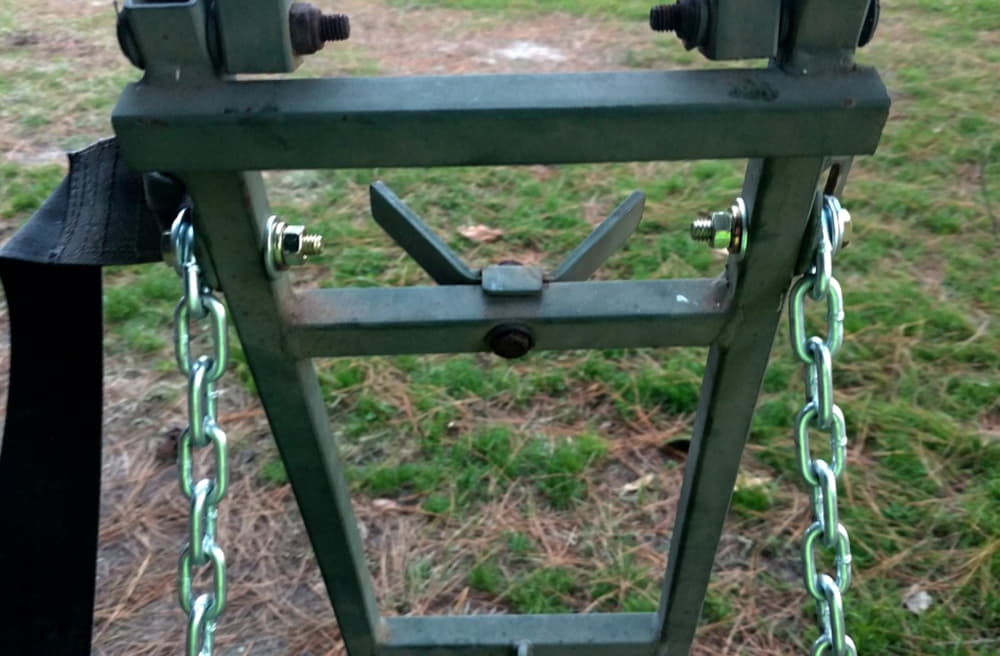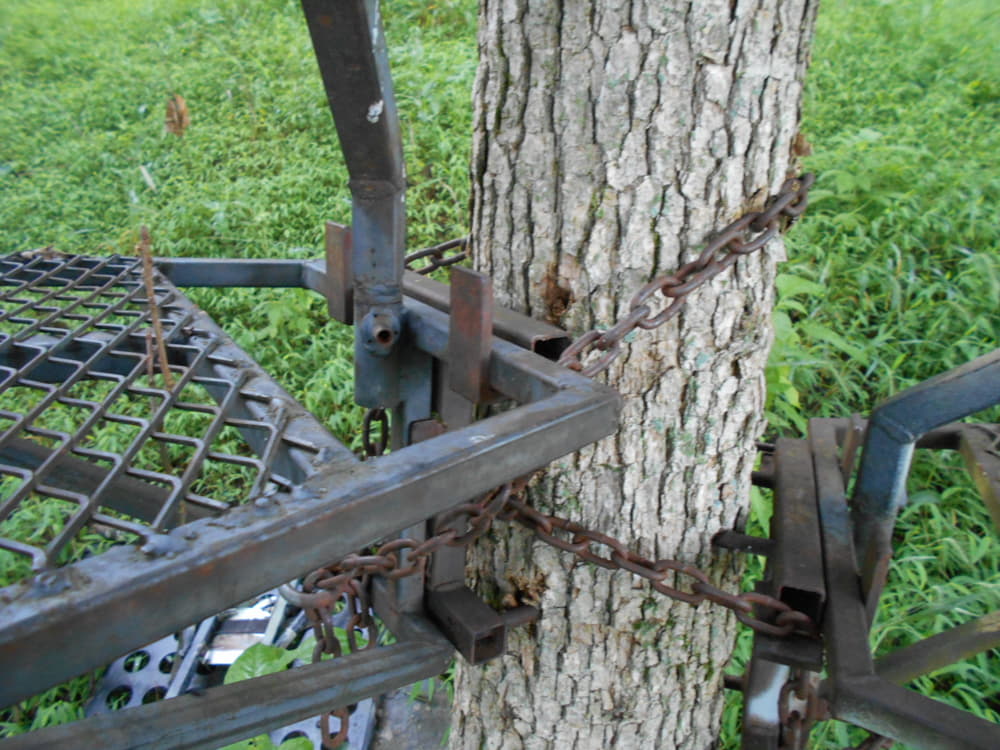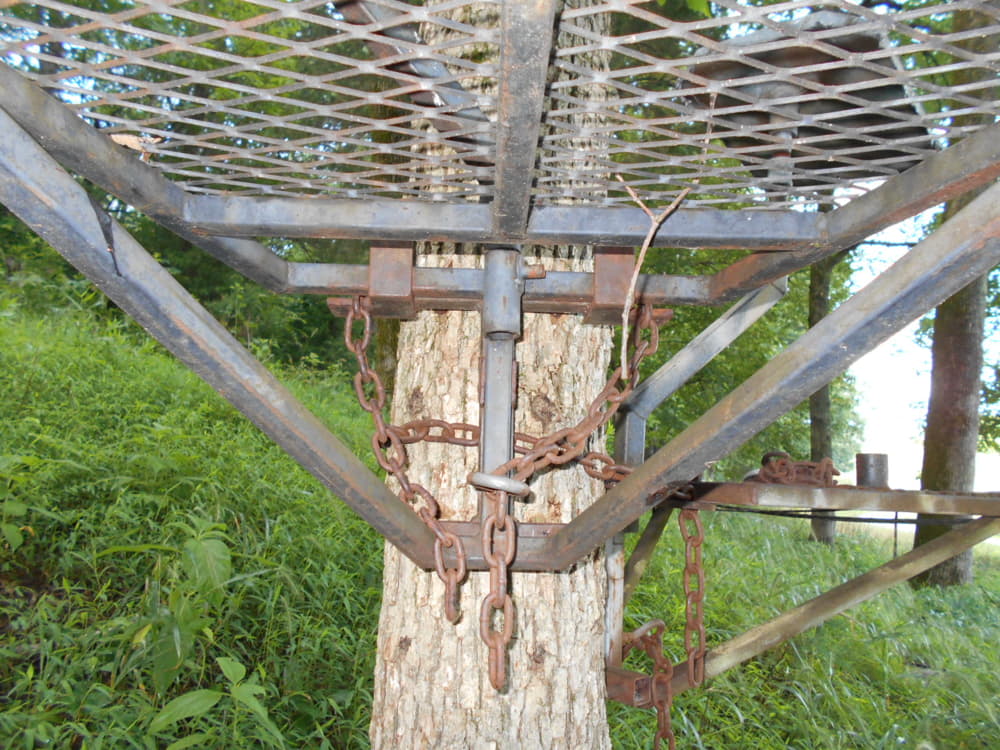If you are an avid hunter who enjoys the thrill of being up high in a tree stand, you know how important it is to have reliable equipment. One crucial piece of gear that often gets overlooked is the tree stand cable. It can deteriorate and fray over time, endangering your safety. That’s why replacing tree stand cables with chains is the choice of many hunters these days.
The conventional technique of using cables for tree stands has seen a shift in recent years, with chains emerging as an attractive alternative. The practice of hunting from elevated platforms, or tree stands, has long relied on sturdy cables for stability and safety.
However, the limits of cables have prompted an investigation into more robust alternatives. Because of their inherent strength and resistance to environmental conditions, chains have emerged as a possible replacement. In this article, we will explore the benefits of using chains and how to make the switch.
Benefits Of Replacing Tree Stand Cables With Chains
Replacing typical tree stand wires with chains provides a number of noticeable advantages, transforming the hunting experience. Here are some outstanding benefits:
Increased Durability
Chains are naturally stronger and more resistant to wear and tear than cables. This means they can withstand heavy wear and tear without breaking. Besides, using a chain will ensure a longer service life and reduce maintenance requirements. This added durability is especially important when you are relying on your tree stand for safety while hunting.
Better Stability
Another benefit of using chains is that they provide better stability than cables. Chains provide additional stability and less wobble, resulting in a more pleasant and accurate shooting experience.
Weather Resilience
Chain deterioration brought on by the weather is less likely. Structural design helps maintain their integrity even in extreme weather conditions, which enhances safety and longevity.

Reduced Risk Of Failure
Chains are less likely to suddenly snap or break. The stability of their elevated positions is increased, giving hunters more confidence. Additionally, the increased strength of chains translates to enhanced safety, minimizing the chances of accidents or falls during hunting activities.
Longer Lifespan
Chains also have a longer lifespan than cables, which means you won’t have to replace them as often. Although chains may initially cost more up front, their long lifespan and dependability make them a more affordable option over time. This can save you money in the long run and ensure that you always have reliable equipment when you need it.
Modernization And Positive Environmental Impact
Adopting chain technology demonstrates a dedication to modernizing hunting techniques and gear. Besides, chains’ durability reduces the need for frequent replacements, leading to fewer discarded materials and a smaller ecological footprint.
Other Benefits
Different tree sizes and stand heights can be accommodated by adjusting the length of the chains. Chains instead of cables make less noise, allowing hunters to move more covertly and prevent scaring the prey.
How To Replace Cables In A Tree Stand With Chains
Although it is a fairly straightforward process, replacing tree stand wires with chains does need a few tools and some technical know-how. The steps you should take are as follows:
- To verify whether your current tree stand and cables are compatible with chains, evaluate them. Based on the tree’s height and girth, calculate the necessary chain length.
- Purchase a chain that is the same length or slightly shorter than your cable and any additional hardware needed for installation.
- Carefully remove the existing cables, keeping track of the hardware used to attach them to the tree and stand.
- In the same manner that the last cable was secured, secure the new chain to your tree stand. You might need to use bolts or other hardware for this.
- Test the stability of the tree stand to ensure that the chain is securely attached and working properly.
Tips For Replacing Safety Chains
To maintain a safe and reliable setup when replacing cables, care must be taken with technique. Here are some crucial pointers to help you navigate the procedure:
- Safety First: Put your safety first by donning the proper safety gear, such as gloves and goggles. Work in a stable, well-lit setting.
- Choose Quality Chains: Choose chains that are dependable and strong with the right weight-bearing ability for the application. Chains ought to be built to resist environmental conditions and potential stresses.
- Measure Accurately: To achieve a good fit, take exact measurements of the needed chain length. Leave a little extra length for adjustments and flexibility.
- Select Suitable Connectors: Choose connectors or hooks that are specifically designed for attaching chains to your equipment. These connectors should be durable and capable of securely holding the chains in place.
- Maintain Evenness: To keep the equipment balanced and stable, make sure the chains are adjusted equally on both sides.
- Regular Inspection: Check the chains frequently for indications of wear, rust, or damage. To maintain safety, replace any worn or damaged parts right away.

Frequently Asked Questions
Can I use any type of chain for my tree stand?
No, it’s crucial to utilize a chain that is intended for this usage only. Look for chains that have strong wear resistance and are rated for big loads.
Do I need to replace both cables on my tree stand with chains?
It’s usually best to replace both cables at the same time to ensure consistent stability and durability.
Will using chains make my tree stand heavier?
Yes, chains typically weigh more than cables. However, the additional weight is little and shouldn’t interfere with your ability to move or erect your tree stand.
How often should I replace my tree stand chains?
How often you use your tree stand and how much wear and tear the chains endure will determine this. Regularly inspect your chains for signs of wear or breakage, and replace them as necessary.
Can I still use my tree stand in wet conditions if I’ve replaced the cables with chains?
Yes, chains are typically more resistant to moisture than cables and can be used in wet conditions without issue.
Conclusion
Replacing tree stand cables with chains is a smart choice for any hunter who values safety, durability, and performance. By following the steps outlined in this guide and choosing high-quality chains, you can enjoy greater peace of mind and confidence while hunting. Don’t undervalue the value of dependable gear, and take the necessary actions to enhance your tree stand right now.


Deer stand manufacturers who utilize fabric straps instead of more weather resistant chains or cables should be held liable for any injuries due to strap failure despite their cautionary notes to inspect and test prior to each use or to replace regularly. You just cannot tell by looking when a strap is no longer serviceable and most hunters don’t have the money to replace straps every year. Manufacturers should expect stands to be left in the woods for the duration of the deer season if not all year long. This means no wood, fabric or straps. Chains or stainless cable are preferred alternatives. Deaths or injuries by gun or bow are negligible compared to deaths or injuries due to falling from tree stands. Hunters need to address this!
Regarding your picture of the green stand with shiny new chains connecting the platform to the vertical portion of the stand: You show the chains secured with standard nuts and lock washers. Lock washers generally cannot be relied on to prevent nuts from backing off. Also, most hardware now is sourced from China and does not consistently meet USA standards for sheer strength. Use appropriately sized/rated American made hardware, preferably stainless and Nyloc nuts to assure the chains do not come loose. Also, chains can be dipped in plastic handle material to quieten them and it also offers rust protection as would galvanized chain. The nylon fabric tree strap on this stand is still the unaddressed failure point!